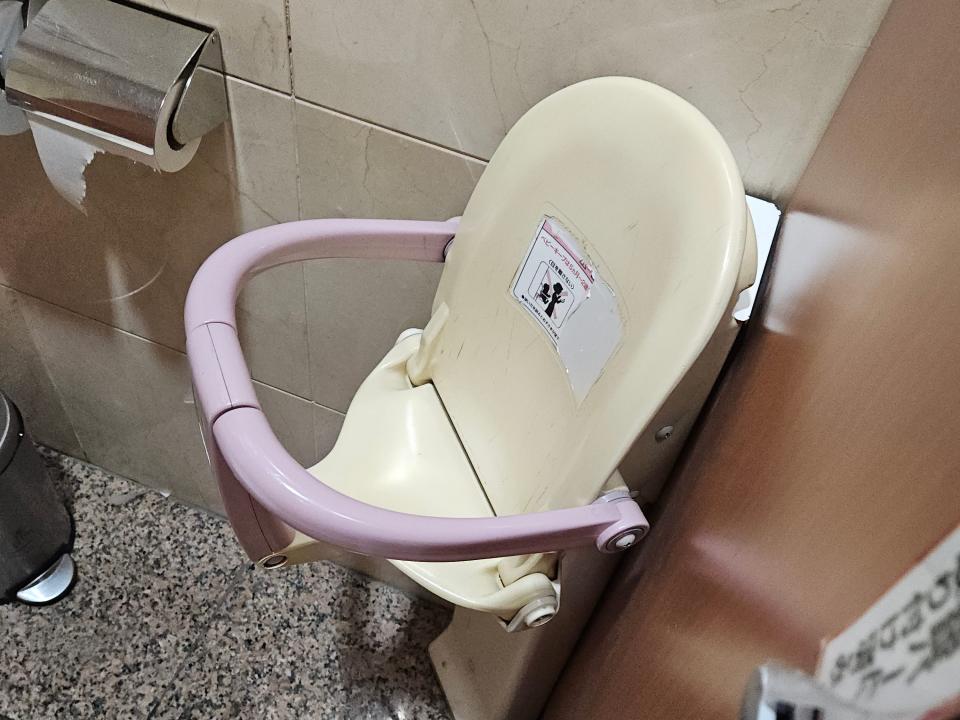I'm a New Yorker who recently visited Japan. I was surprised to find clean bathrooms everywhere I went.
I've lived in New York City for more than a decade.
In a recent trip to Japan, I realized New York was missing three key things.
Accessible, clean public bathrooms are almost impossible to find in New York.
I've lived in New York for more than a decade, and during a recent visit to Japan in April 2023 I saw three major differences in how public spaces are used to the best of their potential in Tokyo.
When I came back to New York City, and people asked me about some of my favorite things from the trip, I said the trains, pedestrian safety, and the bathrooms. New York City planners could learn a lot of lessons from Tokyo's highly organized and effective use of shared spaces.
Clean public restrooms were everywhere
In New York City, even if public areas such as parks or subway stations have restrooms, they aren't always open, whether because of limited hours of operation or issues of disrepair.
My experience finding accessible restrooms in Tokyo was different from that in New York City. Bathrooms were everywhere, including train stations — and usually in both the north and south ends of the station. Every bathroom was clean, and there were never any lines.
The stalls in some restrooms even had booster-like seats available for mothers to place their toddlers while using the facilities.

Watching people cross the street in Tokyo was beautiful
Pedestrian safety is crucial anywhere but is especially necessary in cities where there are often many pedestrians sharing sidewalks and crossing streets that are crowded with cars, e-bikes, and scooters.
In Tokyo, I was in awe of the Shibuya Crossing, which is known as the world's busiest pedestrian crossing. Traffic stopped in all directions so pedestrians could cross everywhere. It was beautiful to witness.
In New York City, pedestrian fatalities are an unfortunate reality despite the Vision Zero initiative that the city began in 2014 to try to prevent them. In 2021 in Japan, 3,000 people died in crashes, compared with 43,000 in the US, according to Bloomberg.
I previously worked on policy issues for the New York City Council and researched the feasibility of implementing the Barnes Dance — when all traffic stops for pedestrians to cross from all corners at the same time, including diagonally — in busy intersections in the city. One major safety hazard for pedestrians is that even when pedestrians have the right-of-way, traffic isn't stopped in all directions; drivers are still technically allowed to make turns at some intersections. Though drivers are supposed to give pedestrians the right-of-way, that isn't always what happens.
Japan has more than 300 intersections with scramble crossings, or Barnes Dance, the best known being the Shibuya station in Tokyo.
Trains have a reputation of being on time in Japan
Timely public transit is also often lacking in New York City. Train delays, whether they involve scheduled track work or occur randomly because of track fires or other emergencies, happen too frequently. Train, subway and bus delays happen so much that a verification-letter request from the MTA is available for workers who are late because of these disruptions, and it is often joked about as being necessary.
These delays can cause a lot of stress for New Yorkers.
In Tokyo, the trains have a reputation for running on schedule. In fact, when a train once left 25 seconds early, an apology was issued. The trains are also pristine, and I never saw any stray litter.
New York City definitely has room for improvement regarding its bathrooms, pedestrian safety, and public transit. While no place is perfect, it is important to look at the positive aspects of other cities to see what lessons can be implemented.
Read the original article on Insider

